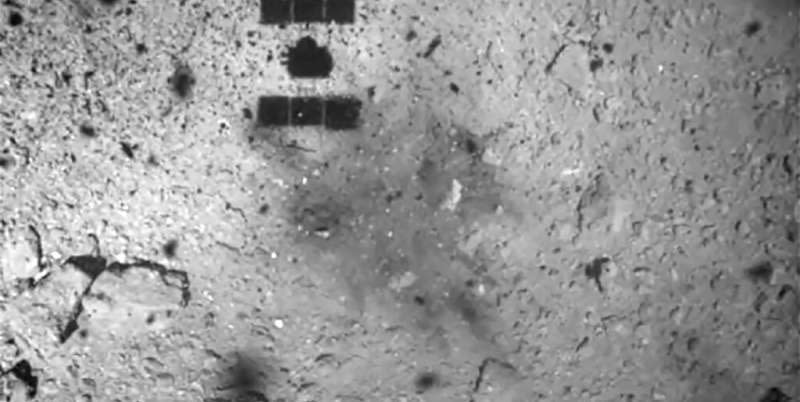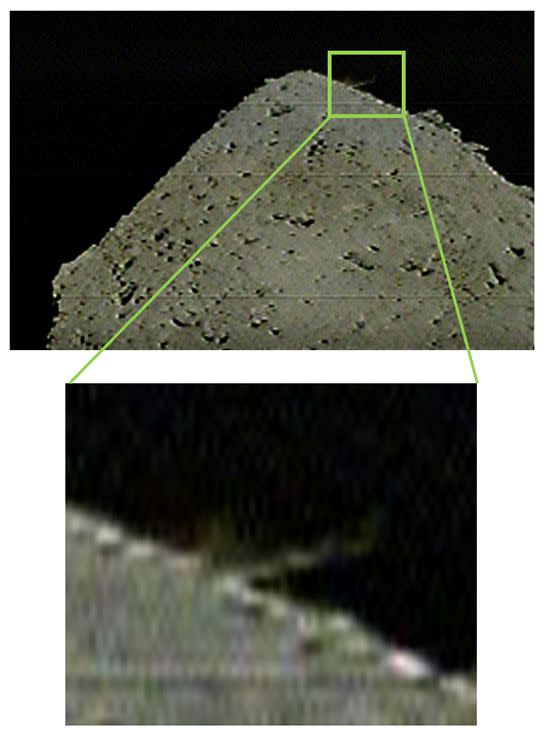Scientists Were Legit Surprised at How Much of an Asteroid They Blew Up

Earlier this month, the Japan Aerospace Exploration Agency (JAXA) let loose on an asteroid. Its Hayabusa2 spacecraft fired a projectile at a space rock called Ryugu. JAXA hoped that firing at the asteroid would be good practice for Earth defending itself from asteroids that might be headed this way.
Having had time to check their work after the explosion, the researchers can now confirm the success of the test and the creation of the first artificial crater on an asteroid. "Creating an artificial crater with an impactor and observing it in detail afterwards is a world-first attempt," says Yuichi Tsuda, Hayabusa2 project manager, in a press statement. "This is a big success."
[CRA2] Crater formation where the Small Carry-on Impactor collided with Ryugu has been confirmed! These images compare the surface before and after the SCI collision. pic.twitter.com/BZPYlHhSjs
- HAYABUSA2@JAXA (@haya2e_jaxa) April 25, 2019
The crater was made by a device known as a Small Carry-on Impactor (SCI). On April 5, the SCI fired a small projectile at the surface of Ryugu, a spherical asteroid that's designated as a near-Earth object. Hayabusa2 then high-tailed it away from the asteroid to avoid the chance of being hit with debris from the explosion.
But something about the smash-up surprised scientists. The SCI had been even more effective than they planned.

The SCI's goal was to make a crater 6.5 to 10 feet across (2-3 meters). But upon closer examination, it's clear that the impact carved out a crater that's 66 feet. Scientists would have expected that sort of impact in a sandy area, but the area chosen on Ryugu was rocky and hard. They expected more resistance, in other words.
【CRA2】形成された人工クレーターの正確な大きさや形は今後詳しく調べますが、幅20mほどの領域の地形が変化していることが分かります。これほど大きな変化が起こるとは想定していませんでしたので、プロジェクト内でもさっそく活発な議論が起こっています。惑星科学の新たな進展が期待できそうです。
- 小惑星探査機「はやぶさ2」 (@haya2_jaxa) April 25, 2019
"The surface is filled with boulders but yet we created a crater this big. This could mean there's a scientific mechanism we don't know or something special about Ryugu's materials," says Masahiko Arakawa, a Kobe University professor involved in the project, in the press statement. Arakawa added that the project's success marked "the best day of his life."
While the mission hoped to show how asteroids could be broken up in the event of one hurtling towards Earth, there were also more benign scientific goal in sending out the SCI, like the foundation of the universe. Ryugu is theorized to hold organic matter and water from some 4.6 billion years ago. Getting a chance to see and analyze it could offer a significant artifact for scientists
Blasting off the surface of the asteroid will give JAXA a chance to see what's underneath. And that means more chances for scientific discovery.
('You Might Also Like',)

